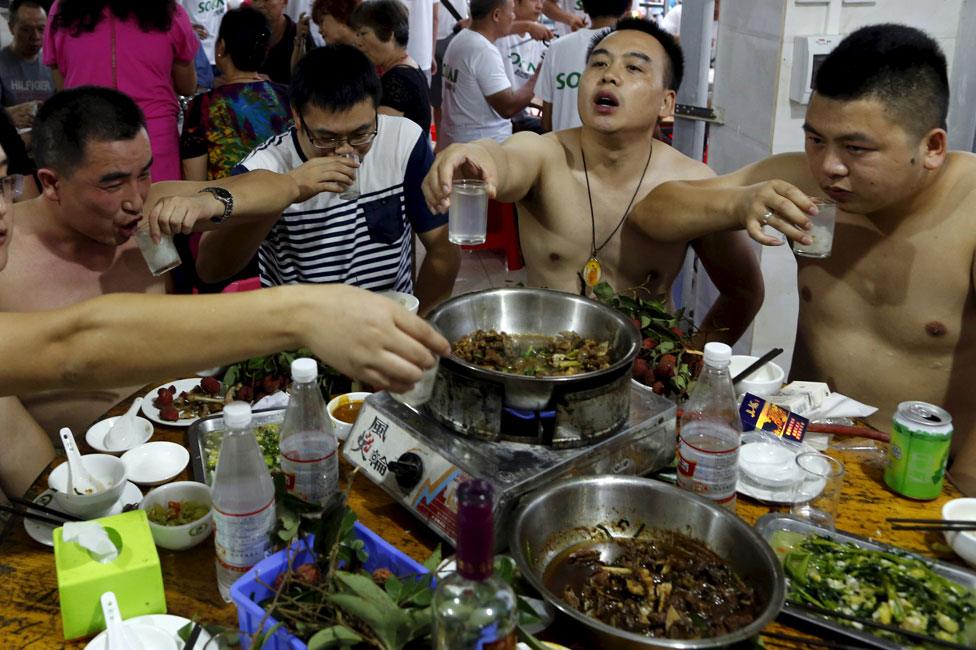1. Tip: Go for vendors that have large lines and high turnover, as fresh ingredients are more likely to be utilized.Pro: A high turnover rate indicates the quality of service and its popularity with locals.Cons: It could take an extended time to wait in line.
2. Observe Hygiene PracticesTips: Find vendors with gloves on, keep their stations clean, and avoid handling food with hands that aren't clean.Pro: Reduces the risk of foodborne illnesses.Cons: High hygiene standards may limit your options.
3. Avoid Uncooked FoodsFor a bacteria-free diet, choose foods that have been cooked, like grilling and skewers.Pros: Cooked food will not trigger food poisoning.Cons: It restricts your options as certain raw foods like sashimi, or cold salads are appealing.
4. Inspect IngredientsTake note of the smell and appearance of the food. Fresh ingredients should look bright and not have an offensive smell.Pro can help you avoid the use of rotten or poor-quality ingredients.Con: It may be difficult to determine freshness in food without experience.
5. Buy Boil or Bottled BeveragesIf you want to avoid tap water that's unsafe use canned or bottled water. You can also make tea using boiling water.Pro: Protects against waterborne diseases.The cons: Your options are limited, particularly when you are a patron of street stalls.
6. Start SmallTip: Try a small portion of food you've never tried before to observe what your body's reaction.Reduces the likelihood of serious digestive problems.Cons: May not be able to satisfy your craving If the food turns out to be delicious and safe.
7. Beware of Ice in DrinksTip: Don't use ice cubes, as they may be made from tap water that has not been treated.Pro: Protects your water from contamination.Con: May leave your drinks less refreshing, particularly in hot weather.
8. Select Items that are Freshly CookedTip: Select foods that have been cooked right before your eyes.Pro: Lowers the risk of contamination due to exposure for a long time.Con: Certain pre-prepared street food items might be irresistible or even irresistible.
9. Sanitizer Carry HandTips: Make sure to use hand sanitizers or wet wipes before eating, especially when handwashing facilities aren't available.Pros: Lowers the risk of transferring bacteria from your hands onto food items.Con: It may be difficult to carry additional items.
10. Be Faithful to Your InstinctsHowever tempting a product may appear when it looks or is stale, it's best to steer clear of it.Pro: It allows you avoid foods which can cause illness.Cons: Could result in a loss of authentic experiences due to over-caution.
Street Food in China has its pros and consStreet food is cheap and tasty.The abundance of vendors makes it easy to get a quick snack or a meal.Cultural Experience Food from the street immerses you in local customs and food culture.Choose from a variety of cuisines: The options are endless, and range from Jianbing sweet crepes to Chuan'r, barbecued on skewers.Pros and Cons of eating Street Food in ChinaHygiene Issues Foodborne illnesses are the risk of serious illness to customers particularly those who frequent unreliable food outlets.Risk of allergic reaction Some ingredients are not listed. This poses a risk for those suffering from allergies.Language barriers can make it difficult to share ingredients or cooking methods.Overeating Temptation. The variety of options can cause you to overeat and a stomach upset.These safety tips will allow you to enjoy China's vibrant street-food culture with confidence and minimize your chances of becoming sick. Read the best culinary experiences across China for website info including explore the riChness of Chinese food, savoring the best of Chinese cuisine, food guide to China best cities, culinary wonders of China, the flavors of Chinese cuisine, China food heritage revealed, a guide to China food scene, China food heritage revealed, savoring the best of Chinese cuisine, the best food destinations in China and more.

Top 10 Tips For Dining Etiquette, Manners And Dress In China
1. Tip: Wait for your server or host to direct you to your seating arrangement.Pro Represents respect for the cultural norms and the authority of the host.Con: When in casual settings, you may not be aware of the host, which could create confusion.
2. Use Chopsticks ProperlyDo not place chopsticks vertically into rice. It looks like the eerie ritual of a funeral. If not in use put them in the chopstick holders and place them flat on a plate or bowl.Pro: Prevents accidental irresponsibility.Con: Learning proper chopstick etiquette might take practice for beginners.
3. Respect eldersTip: Let the oldest or the senior one to start eating first. In the past, they were served first.Pro: Respects the traditional family and social hierarchy.Con: In casual situations, this practice may appear unnecessary or omitted.
4. Share DishesChinese food is enjoyed by all. Dishes are placed at the center of the table for everyone to enjoy. Do not eat the last meal unless it's offered to you.Pro: Creates a sense that there is a community and a shared experience.Pro: Sharing can limit your food choices If you're particular.
5. Avoid Wasting FoodTip - Only eat the most you can. Food that is left on a plate could be seen as inconsiderate.Pro: Shows gratitude for the host.Con: Overestimating the size of your appetite may make it impossible to finish the meal.
6. Toast properlyIt is a good idea to show respect by holding your glasses slightly lower than those of respected or older people.Pro: Demonstrates politeness.Con: May be awkward to remember in a big group of people with many toasts.
7. Don't reverse fishTip: In southern China it's considered bad luck to flip a fish once you've eaten only single side. This represents the possibility of a boat capsized.Pro: This will aid you in avoiding offending beliefs within your locality.Contra: The cultural customs in northern China might differ and this could result in mixed practices.
8. It's OK to Slurp and BurpSlurping noodles or soup isn't considered to be rude. It's a sign that you're enjoying yourself. It is also accepted as a way of expressing appreciation to the chef.Relax and enjoy your meal without stressing about Western ways of life.Con: It can be awkward if this clashes with your personal culture's norms.
9. Chopsticks and PointingTip Reminder: It's considered rude to make use of chopsticks as a gesture or to point them. Keep them strictly for eating.Pro: Respectful dining environment.Con: It's very easy to forget this rule in an interesting discussion.
10. It is important to know who pays the billIn China the custom is for the host to insist that the guest pay the cost. Expect resistance when you suggest.Pro: Expresses gratitude to the host's generosity.Pro: Relying on a subject too much may seem unsincere.
Be a good observer of the Chinese Dining Etiquette for its BenefitsRespect for Cultural Values: Following the customs of your country helps build trust with people in the area.Social Bonding : Being a part of a customs creates a feeling belonging and appreciation.Avoids Missteps: Proper etiquette helps you navigate unfamiliar dining situations smoothly.Enjoy the authentic experience. Engaging in customs and traditions enhances the overall experience.Cons of Following the Dining Etiquette in ChinaComplex Rules: The abundance of customs may feel intimidating to those who are new.Regional Variations: Etiquette norms can differ between regions, causing potential confusion.It can be a hassle to follow formalities. This could delay the start of a dinner.Unfamiliar Gestures: Certain practices like correctly using chopsticks requires a lot of practice.You can navigate Chinese Dining Etiquette with ease by following these guidelines. This will ensure a pleasant and respectful experience for you and your guests. See the best the flavors of Chinese cuisine for site advice including discover hidden food gems in China, savor the flavors of China, discover China culinary delights, discover Chinese street food, taste your way through China, journey through China food culture, discover hidden food gems in China, discover hidden food gems in China, China culinary hotspots, discover China regional dishes and more.
